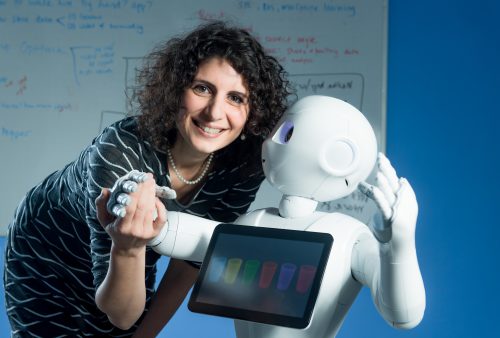In the foreseeable future, humanoid robots will be integrated into patient rehabilitation processes. In a new study, researchers claim that building trust in the interaction between man and machine is a necessary condition for the success of the treatment and explain how this can be done

Designing a social robot that helps in the rehabilitation of patients is a new field that requires in-depth research and many experiments to determine what the optimal conditions are for the patient who is assisted by it. A new study recently published in the journal Science Robotics Emphasizes the importance of creating a relationship of trust between patient and robot for the success of the rehabilitation process. According to the researchers, when planning and designing future robots, first and foremost consideration must be given to the development of mechanisms that build trust between man and machine.
In the near future, the need for the integration of human-like social robots (Socially Assistive robots) in accelerating the rehabilitation processes of patients will increase, since the survival rate of patients with diseases in which there are serious functional deficiencies, such as stroke, is increasing. These patients need training at home due to a lack of treatment hours with physical therapists. Interactions with robots that will serve as companions and partners in practice may encourage them to exercise, allow monitoring of their progress, and give feedback to both the patient and the physical therapist.
The multidisciplinary research was conducted under the leadership of Dr. Sheli Levy-Tzedek, head of the Laboratory for Research on Aging, Cognition and Rehabilitation in the Department of Physical Therapy and a member of the Zalotovsky Center for Neuroscience at Ben-Gurion University of the Negev, in collaboration with Dr. Philip Kalmeier, a neurologist from the University of Freiburg in Germany, Prof. Oliver Müller , a philosopher and ethicist from the University of Freiburg in Germany, and PhD student Ronit Feingold-Polk, from the Laboratory for Research on Aging, Cognition and Rehabilitation at Ben-Gurion University and a physiotherapist specializing in rehabilitation after a stroke.
"Patients in rehabilitation processes, for example after a stroke, are in a vulnerable and sensitive state," explains Dr. Levy-Tzedek. "They rely to a large extent on the trusting relationships they have forged with their therapists. For this reason, we must carefully consider the pros and cons of integrating humanoid robots into the process of post-stroke rehabilitation. Alongside the pioneering contribution of robots to the rehabilitation of patients, their use raises important ethical and social questions. We claim that creating trust is a necessary condition for the success of this interaction, at the same time for purely technological progress."
According to Dr. Levy-Tzedek, humanoid robots can help with the exercises that patients must perform, but the difficulties that may arise in the relationship between the recovering person and the robot must be considered: "For example, from a robot that looks and behaves like a human there may be expectations that the robot cannot fulfill," she says Dr. Levy-Tzedek, "This may lead to disappointment, the breaking of trust, and avoidance of practice because of this." Also, a robot that gets stuck or behaves unexpectedly will make it difficult for the patient to trust that he is a successful partner in the rehabilitation process.
In the article, the researchers indicate several ways to increase trust between the patient and the robot: the patient must be confident that the interaction with the robot is safe and that he is performing movements that promote his treatment. Patients should be able to recognize and predict the robot's intentions in treatment, and the robot should be aware of the patient's mental and physical state. Also, the robot must be able to communicate with people who experience difficulty in communication - both in understanding spoken language and speaking.
More of the topic in Hayadan:
